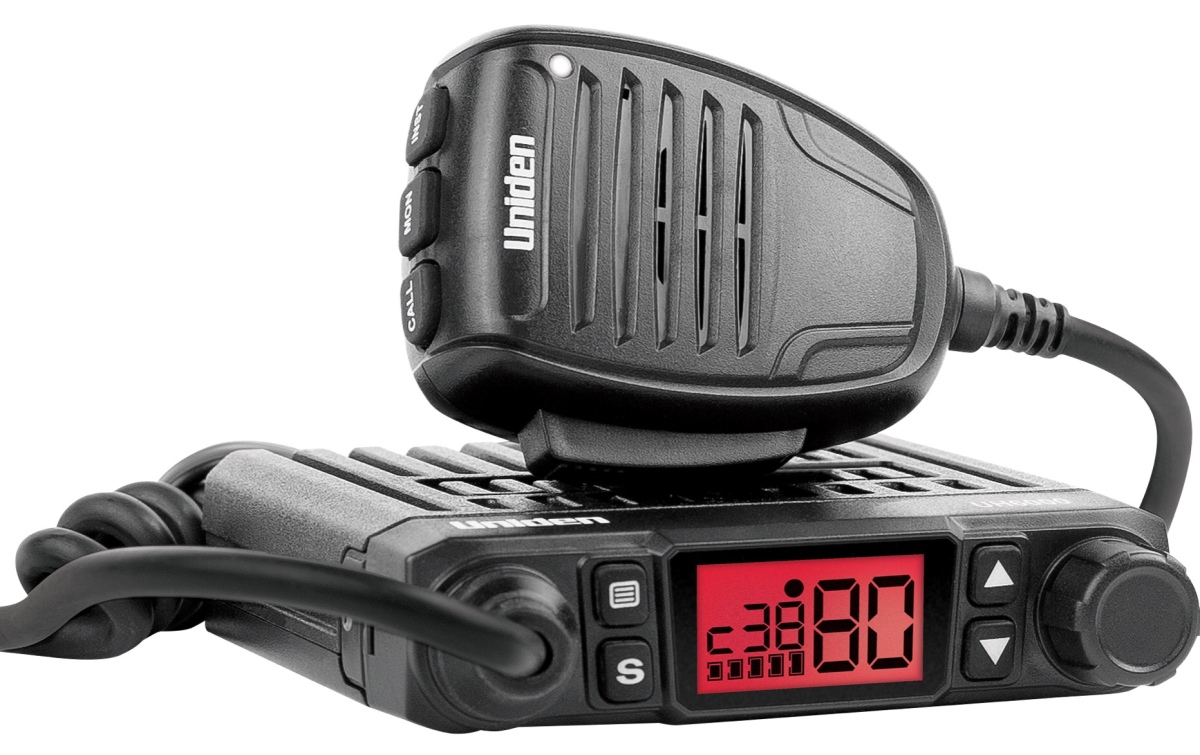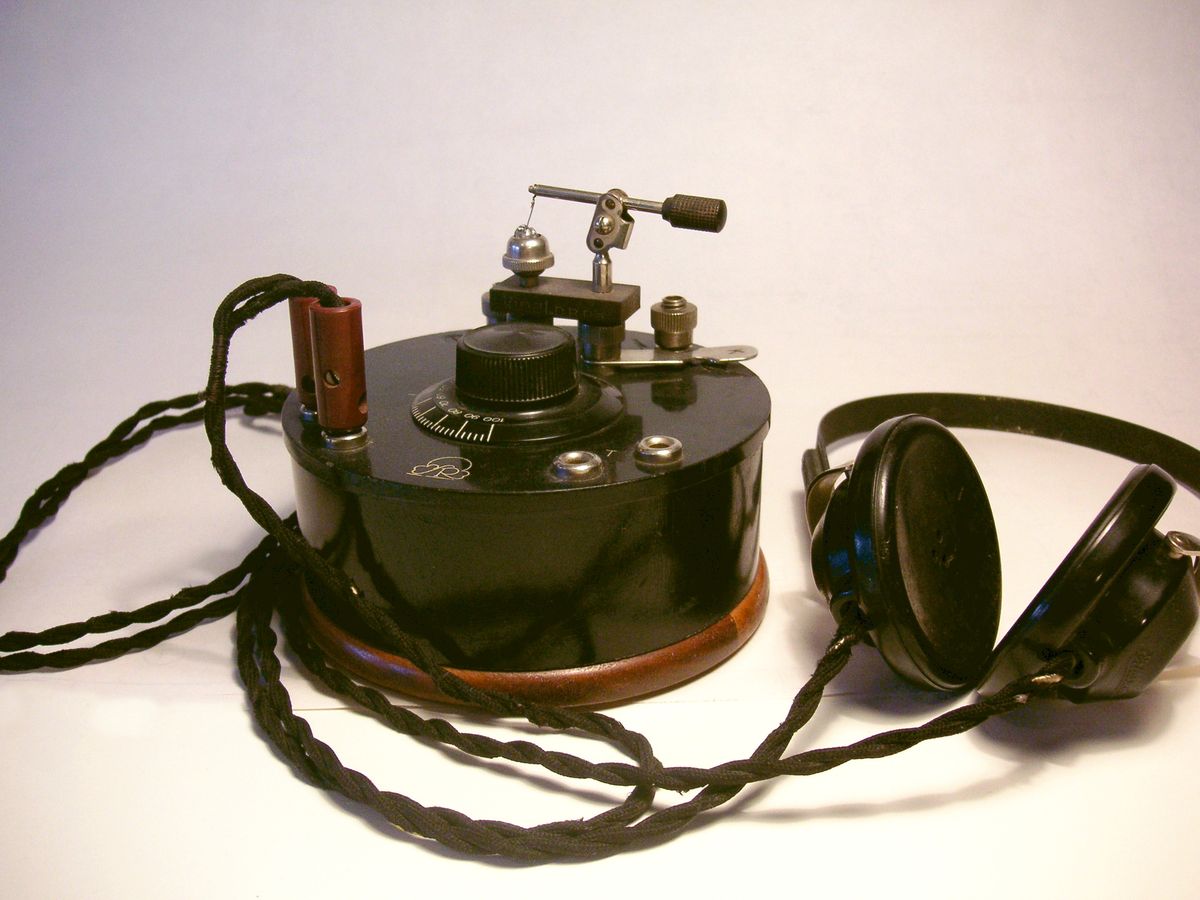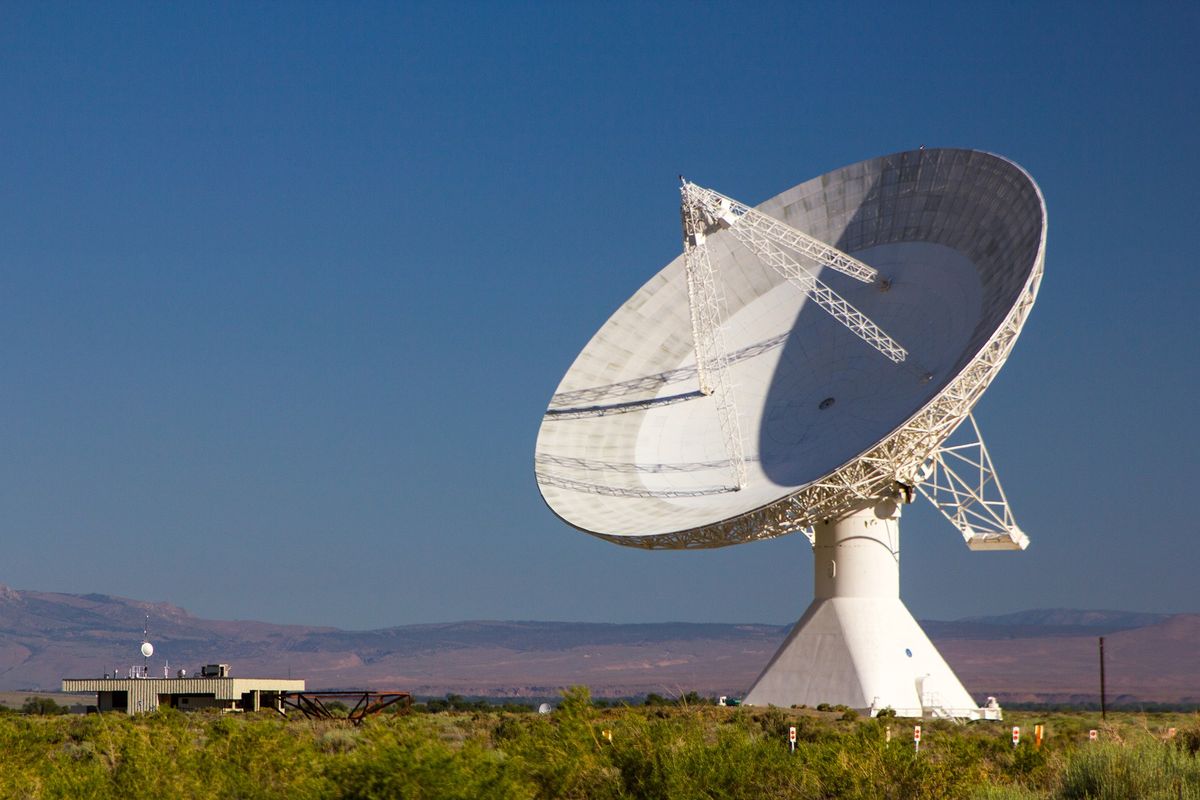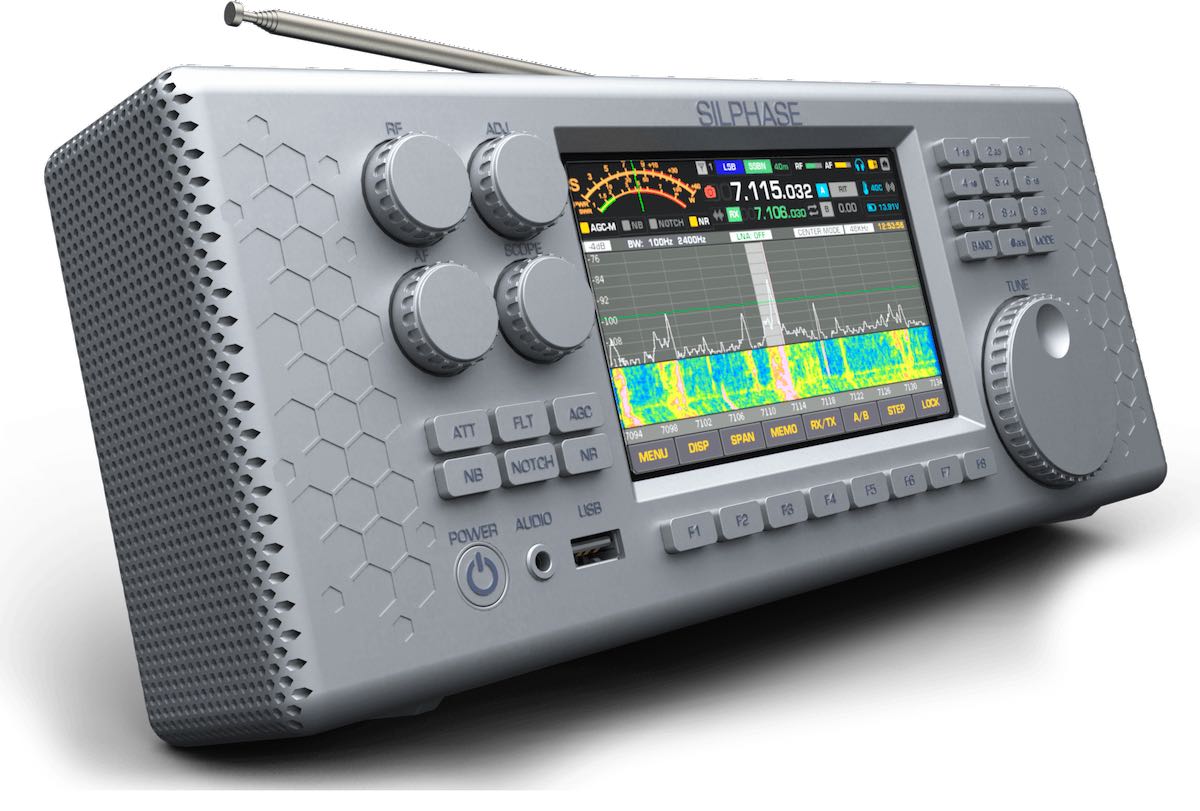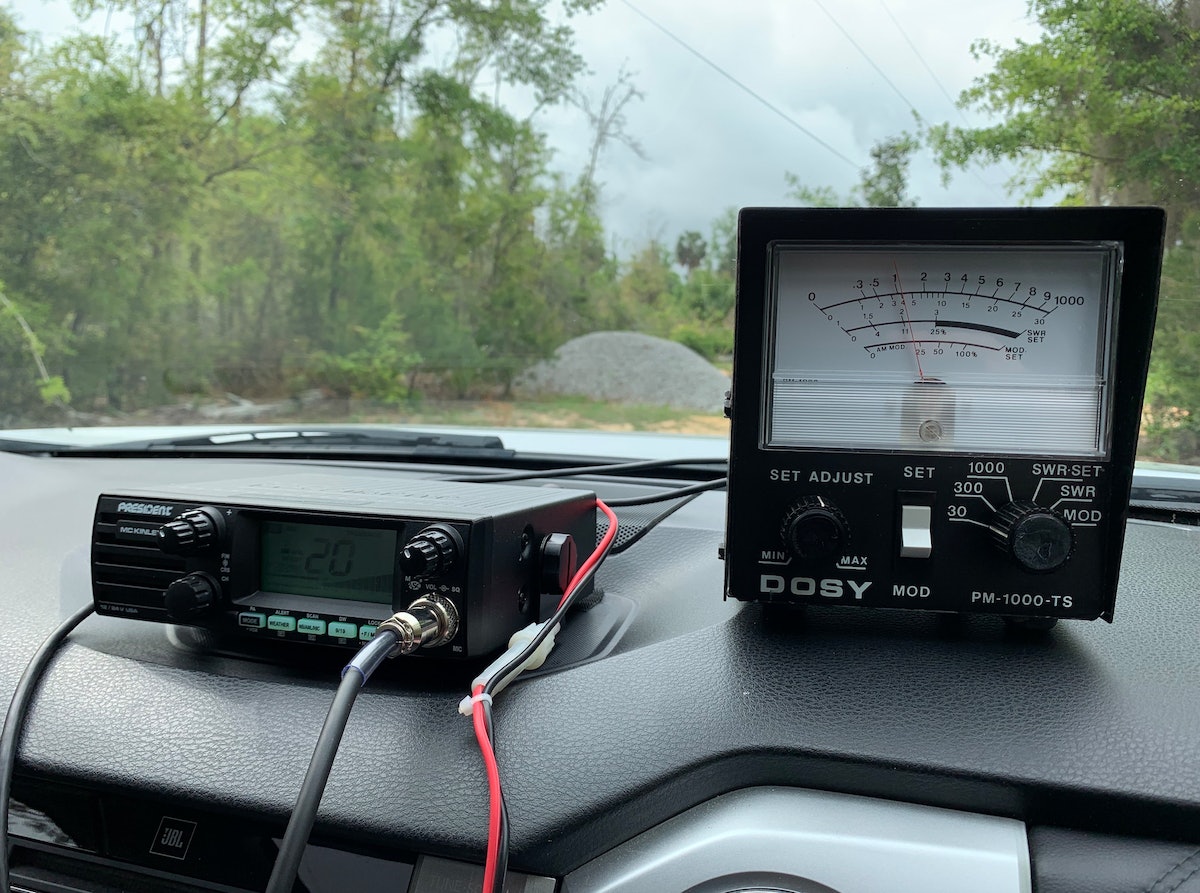Home>Devices & Equipment>Radio>What Is A Bluetooth Radio
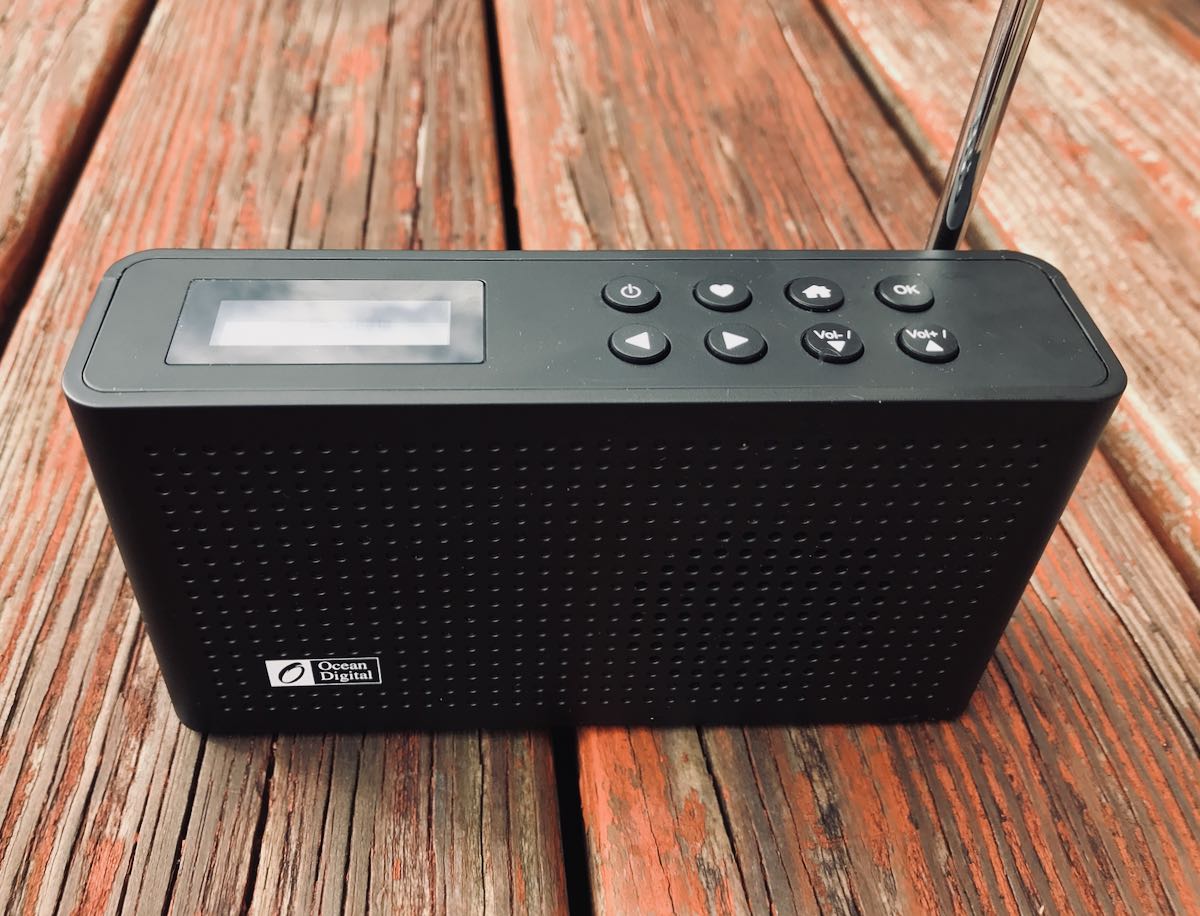

Radio
What Is A Bluetooth Radio
Modified: March 8, 2024
Discover the benefits and functions of Bluetooth radio. Stay connected and listen to your favorite music wirelessly with this versatile gadget.
(Many of the links in this article redirect to a specific reviewed product. Your purchase of these products through affiliate links helps to generate commission for AudioLover.com, at no extra cost. Learn more)
Table of Contents
Introduction
Welcome to the world of Bluetooth radio, a technology that has revolutionized the way we connect and communicate wirelessly. In this digital age, where convenience and efficiency are paramount, Bluetooth radio has emerged as a ubiquitous tool for seamless data transfer and audio streaming. Whether you’re syncing your smartphone to your car’s audio system or connecting a wireless headset to your computer, Bluetooth radio enables a hassle-free and wireless experience.
But what exactly is Bluetooth radio? How does it work? And what are its advantages and limitations? In this article, we’ll delve into the intricacies of Bluetooth radio, exploring its functionality, applications, and its impact on our daily lives.
Bluetooth radio is a wireless communication technology that operates within the radio frequency range of 2.4 to 2.485 GHz. Originally developed in the late 1990s by a consortium of tech companies, Bluetooth radio was primarily designed for short-range communication between devices. It uses radio waves to create a connection between two devices, allowing them to share data or transmit audio wirelessly.
To establish a connection, Bluetooth radio follows a simple process known as pairing. When two devices with Bluetooth capabilities come within range of each other, they initiate a pairing process. During the pairing process, the devices exchange unique identifiers known as Bluetooth addresses, enabling them to establish a secure and encrypted connection. Once paired, the devices can communicate with each other and exchange data or audio streams effortlessly.
One of the key advantages of Bluetooth radio is its versatility. It allows for seamless connectivity between a wide range of devices, including smartphones, tablets, laptops, smart speakers, headphones, and even smart home devices. This interoperability has made Bluetooth radio the go-to standard for wireless communication, providing convenience and ease-of-use to consumers worldwide.
Furthermore, Bluetooth radio boasts an impressive range of approximately 30 feet, depending on the transmitting power and any obstructions present. This range allows for flexible usage scenarios, whether you’re streaming music from your smartphone to a Bluetooth speaker or transferring files between your laptop and a wireless headset.
However, like any technology, Bluetooth radio also has its limitations. One of the main drawbacks is its limited range, which can be hindered by physical obstacles such as walls or interference from other wireless devices operating within the same frequency range. Additionally, Bluetooth radio consumes more power compared to other wireless technologies, which can impact the battery life of devices that rely heavily on Bluetooth connectivity.
In the next sections, we’ll explore in more detail how Bluetooth radio works, its advantages, limitations, and the various applications it has found in our daily lives. So, let’s dive deeper into the world of Bluetooth radio and unravel its fascinating capabilities!
Definition of Bluetooth Radio
Bluetooth radio is a wireless communication technology that enables short-range data transfer and audio streaming between devices. It operates within the 2.4 to 2.485 GHz radio frequency range and is designed as an open standard for seamless connectivity between various devices.
The name “Bluetooth” originated from the 10th century Viking king, Harald Bluetooth, known for his ability to unite different tribes. In a similar vein, Bluetooth radio brings together diverse devices, allowing them to communicate and exchange information effortlessly.
At its core, Bluetooth radio utilizes radio waves to create a secure and encrypted connection between devices. This enables the devices to communicate and exchange data or audio streams wirelessly, without the need for physical cables or connections.
One of the key features of Bluetooth radio is its simplicity. It employs a pairing process to establish connections between devices. During pairing, devices exchange unique identifiers known as Bluetooth addresses. Once paired, the devices can maintain a connection that supports various functionalities like data transfer, audio streaming, and even remote control operation.
Bluetooth radio operates on a master-slave model. The device initiating the connection acts as the master, while the receiving device acts as the slave. This model allows for flexible usage scenarios, where one device can connect and control multiple slave devices simultaneously.
Moreover, Bluetooth radio is designed to be power-efficient, making it ideal for battery-operated devices like smartphones, tablets, and wireless earphones. The technology has evolved over the years, with each iteration introducing enhancements to data transfer rates, security protocols, and range capabilities.
Overall, Bluetooth radio provides a versatile and convenient solution for wireless communication between devices. It has become an integral part of our daily lives, enabling us to connect and interact with a wide range of devices seamlessly. From streaming music to hands-free calling, Bluetooth radio enhances the user experience and eliminates the hassle of tangled wires and cumbersome connections.
How Bluetooth Radio Works
Bluetooth radio operates on the principle of using radio waves to transmit and receive data between devices. It follows a simple yet effective process to establish connections and facilitate wireless communication.
When two devices with Bluetooth capabilities come within range of each other, they initiate a pairing process. This process involves four main steps:
- Device Discovery: The devices actively search for other Bluetooth-enabled devices in their vicinity. They broadcast signals and listen for responses from other devices.
- Device Inquiry: Once nearby devices are discovered, the devices exchange information to determine if they are compatible and can establish a connection. This step ensures that the devices support the necessary Bluetooth profiles and services.
- Pairing: During pairing, the devices exchange unique identifiers known as Bluetooth addresses. This allows the devices to authenticate and establish a secure, encrypted connection.
- Connection Establishment: Once paired, the devices can communicate with each other. The master device initiates the connection, and the slave device accepts the connection request. This establishes a connection between the devices, allowing them to exchange data or audio streams.
Bluetooth radio uses Frequency-Hopping Spread Spectrum (FHSS) technology to transmit data. This technology ensures a robust and reliable connection, even in environments with various sources of interference. FHSS works by rapidly switching frequencies within the 2.4 GHz frequency range. By hopping between different frequencies, Bluetooth radio avoids interference from other devices operating in the same frequency band.
Bluetooth devices operate on different Bluetooth profiles, which define the specific functionalities and services that a device can support. Some common Bluetooth profiles include:
- Hands-Free Profile (HFP): Enables wireless communication between a mobile phone and a hands-free car kit or headset.
- Advanced Audio Distribution Profile (A2DP): Facilitates high-quality audio streaming from a device to wireless speakers or headphones.
- File Transfer Profile (FTP): Allows for the transfer of files between devices.
- Human Interface Device Profile (HID): Supports wireless keyboards, mice, and game controllers.
Additionally, Bluetooth radio uses encryption algorithms to ensure data security during transmission. This provides protection against unauthorized access and eavesdropping.
The range of Bluetooth radio varies depending on factors such as transmitting power and the presence of physical obstructions. Typically, Bluetooth radio has an effective range of about 30 feet (10 meters). However, newer versions of Bluetooth, such as Bluetooth 5.0, offer extended range capabilities, enabling connections over longer distances.
In summary, Bluetooth radio works by employing radio waves to establish connections and facilitate wireless communication between devices. It utilizes a pairing process, FHSS technology, and supports various Bluetooth profiles to enable seamless data transfer and audio streaming.
Advantages of Bluetooth Radio
Bluetooth radio offers numerous advantages that have made it a widely adopted wireless communication technology. Its versatility, convenience, and compatibility have revolutionized the way we connect and interact with devices. Here are some key advantages of Bluetooth radio:
- Wireless Connectivity: Bluetooth radio enables wireless connectivity between devices, eliminating the need for physical cables or connections. This allows for a clutter-free and convenient user experience.
- Seamless Pairing Process: The pairing process of Bluetooth radio is simple and efficient. Devices can easily discover and establish connections with compatible devices, making it effortless to connect and communicate.
- Compatibility and Interoperability: Bluetooth radio is designed as an open standard, ensuring compatibility and interoperability between different manufacturers and devices. This allows for seamless communication and data transfer between a wide range of devices, regardless of the brand or operating system.
- Versatility: Bluetooth radio supports various profiles and functionalities, making it versatile for different applications. From audio streaming to file transfer, Bluetooth radio can handle a wide range of tasks, making it suitable for both personal and professional use.
- Power Efficiency: Bluetooth radio is designed to be power-efficient. It consumes minimal energy, making it ideal for battery-operated devices like smartphones, tablets, and wireless earphones. This ensures extended battery life and a longer usage time.
- Short-Range Communication: Bluetooth radio is primarily intended for short-range communication, typically within a range of about 30 feet. This makes it ideal for applications where devices need to communicate within a limited proximity, such as connecting a smartphone to a car’s audio system or transferring files between devices in close proximity.
- Security: Bluetooth radio incorporates encryption algorithms to provide a secure and encrypted connection between devices. This ensures that data transmitted over Bluetooth remains confidential and protected from unauthorized access.
- Cost-Effective: Bluetooth radio is a cost-effective solution for wireless connectivity. The technology is widely adopted, making Bluetooth-enabled devices accessible and affordable for consumers.
These advantages have made Bluetooth radio a go-to standard for wireless communication. Whether it’s streaming music, connecting peripherals, or transferring files, Bluetooth radio provides a seamless and efficient solution for connecting and interacting with devices.
Limitations of Bluetooth Radio
While Bluetooth radio offers many advantages, it is not without its limitations. It’s important to be aware of these limitations to better understand the capabilities and potential challenges of using Bluetooth technology. Here are some key limitations of Bluetooth radio:
- Limited Range: Bluetooth radio has a limited range of approximately 30 feet (10 meters), which can be affected by physical obstructions such as walls or interference from other wireless devices operating in the same frequency range. This restricted range may limit the flexibility of device placement and communication distance.
- Potential Interference: Bluetooth radio operates within the crowded 2.4 GHz frequency range, which is also used by other devices like Wi-Fi routers, cordless phones, and microwave ovens. This can lead to potential interference, affecting the quality and reliability of Bluetooth connections in certain environments.
- Bandwidth Limitations: Bluetooth radio has limitations in terms of data transfer speeds. While newer versions of Bluetooth, such as Bluetooth 5.0, have improved data transfer rates, they still cannot match the speeds offered by other wireless technologies like Wi-Fi or wired connections.
- Power Consumption: Bluetooth radio can consume more power compared to other wireless technologies. Continuous Bluetooth connectivity may impact the battery life of devices, especially if they heavily rely on Bluetooth connections for extended periods. It is important to keep an eye on battery usage and consider using power-efficient modes when necessary.
- Device Compatibility: Although Bluetooth radio is designed to be backward compatible, there may be compatibility issues between different versions of Bluetooth and older devices. It is essential to ensure that devices are using compatible Bluetooth profiles and firmware to establish a seamless connection.
- Security Risks: Although Bluetooth radio includes security measures such as encryption algorithms, there have been instances of security vulnerabilities in the Bluetooth protocol. It’s crucial to keep devices updated with the latest security patches and exercise caution when connecting to unfamiliar or untrusted devices.
- Connection Capacity: Bluetooth radio supports a limited number of connected devices simultaneously. The exact number depends on the Bluetooth version and device implementation. Exceeding this capacity may lead to connection issues or degraded performance.
Despite these limitations, Bluetooth radio remains a widely adopted and convenient wireless communication technology. Understanding these limitations can help users manage their expectations and optimize their usage of Bluetooth-enabled devices.
Applications of Bluetooth Radio
Bluetooth radio has found widespread applications in various industries and everyday scenarios. Its versatility and convenience have made it an integral part of our lives. Here are some common applications of Bluetooth radio:
- Hands-Free Communication: Bluetooth-enabled devices, such as car audio systems and wireless headsets, allow for hands-free communication. By connecting a smartphone via Bluetooth, users can make and receive calls without the need to physically handle their devices.
- Wireless Audio Streaming: Bluetooth-enabled speakers, headphones, and earphones have become popular for wireless audio streaming. Users can connect their smartphones or tablets to these devices via Bluetooth to enjoy their favorite music or podcasts without the constraints of cables.
- Smart Home Integration: Bluetooth radio plays a crucial role in smart home automation. Many smart devices, such as light bulbs, door locks, and thermostats, can be controlled and monitored using Bluetooth connectivity. This allows users to manage their home devices conveniently from their smartphones or tablets.
- Peripherals and Accessories: Bluetooth connectivity enables wireless communication with peripherals and accessories like keyboards, mice, game controllers, and fitness trackers. This eliminates the need for wired connections and provides users with more freedom of movement.
- File Transfer: Bluetooth radio allows for easy file transfer between devices. Users can quickly send or receive files, like photos or documents, between smartphones, tablets, and computers that are equipped with Bluetooth capabilities.
- Medical Applications: Bluetooth radio is also used in various medical devices, such as blood glucose monitors, heart rate monitors, and hearing aids. It enables seamless communication between the devices and the user’s smartphone or computer for data monitoring and management.
- Location-Based Services: Bluetooth beacons, small devices that transmit Bluetooth signals, can be used for location-based services. Retail stores, museums, and airports utilize Bluetooth beacons to provide customers with personalized notifications, navigation assistance, and targeted advertising.
- Wireless Gaming: Bluetooth connectivity has gained popularity in gaming consoles and mobile gaming. Controllers and accessories can be connected to gaming devices wirelessly via Bluetooth, allowing for a more comfortable and immersive gaming experience.
These are just a few examples of the diverse range of applications for Bluetooth radio. With its wide adoption and continuous advancements, Bluetooth technology continues to evolve and find new uses in different industries and everyday life.
Conclusion
Bluetooth radio has transformed the way we connect and communicate wirelessly. This versatile technology, operating within the 2.4 to 2.485 GHz frequency range, enables seamless data transfer and audio streaming between devices.
Throughout this article, we explored the definition and workings of Bluetooth radio, highlighting its advantages and limitations. We learned that Bluetooth radio offers convenient wireless connectivity, interoperability, and a simple pairing process. Its power efficiency and support for various profiles make it suitable for a wide range of applications.
However, Bluetooth radio has limitations in terms of range, potential interference, bandwidth, power consumption, and device compatibility. Understanding these limitations can help users optimize their usage and manage their expectations.
Bluetooth radio finds applications in hands-free communication, wireless audio streaming, smart home integration, peripherals and accessories, file transfer, medical devices, location-based services, and gaming, among others. Its widespread adoption in different industries and everyday life showcases its versatility and impact.
In conclusion, Bluetooth radio has become an integral part of our digital world, offering wireless connectivity that enhances convenience, efficiency, and flexibility. As technology continues to advance, we can expect further improvements and innovations in Bluetooth radio, making it even more seamless and reliable for our wireless communication needs.

